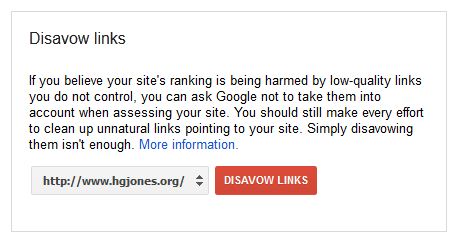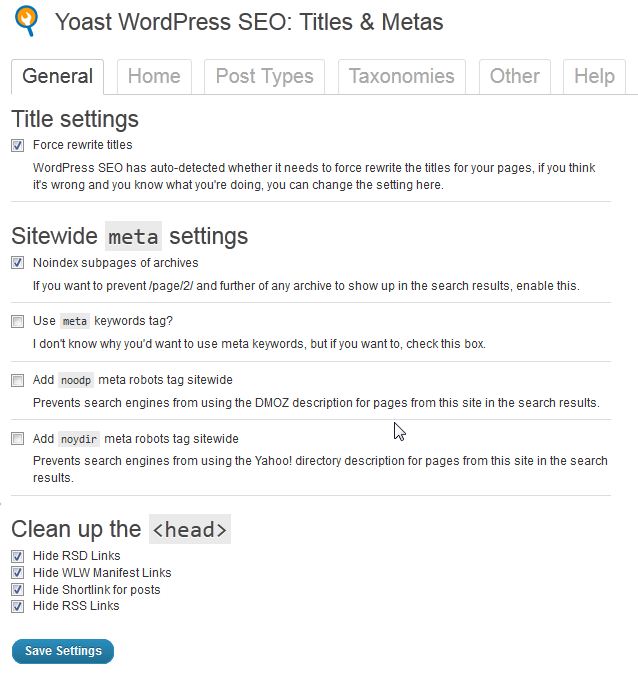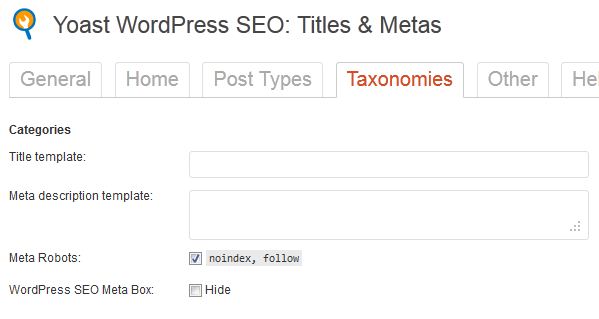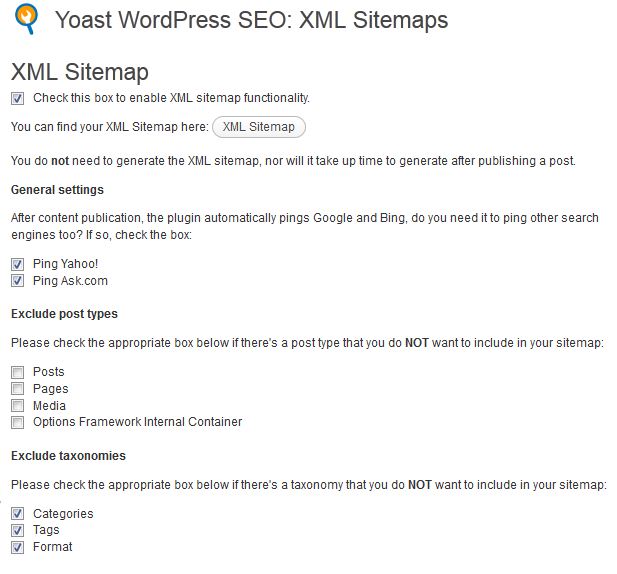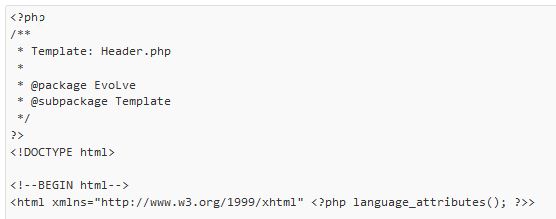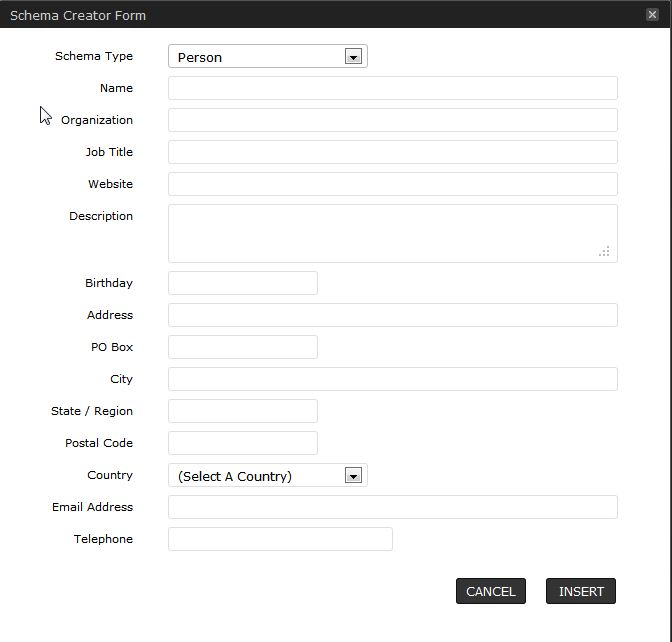Keeping up with Google’s ever-changing algorithm updates on WordPress blogs requires constant monitoring and adjustments, which many webmasters fail to keep up with. Following the Penguin algorithm update, millions of bloggers experienced a halt or decrease in traffic.
Although keeping up with industry trends does require frequent updates to continue performing well in search, most tasks are not time consuming at all. This guide will help you understand recent changes to Google’s algorithm and how to update your WordPress blog to follow the new industry standards.The Penguin and Panda Revolution
The Penguin and Panda algorithm updates targeted low-quality websites full of duplicate content, spammy linking, and poor user experience. WordPress is a wonderful content management system and blogging platform out-of-the-box, but it does create massive amounts of duplicate content.
The days of large scale link exchanges and linking to unrelated, low-quality websites were abruptly ended by the Panda update. In previous years, many bloggers would create low-quality sites with poor internal linking structure, few quality pages and banner ads taking up majority of the pages, which was halted by Penguin. Many bloggers, especially personal bloggers, were left wondering what to do and how to monetize their blogs.
Link Building for Blogs in the Post-Penguin World
Sure, the days of quick and easy links are over, but this doesn’t mean there is any less value to link building. In fact, high-quality, relevant links are valued more than ever. Before building new links, it is imperative to go back and fix your current link profile. Start out by pulling a backlink report of your website. Sift through each of the results, identifying any low-quality or irrelevant links. Contact each webmaster to remove the links. If you cannot find contact information or the webmaster refuses to remove the links, consider using Google’s new disavow links tool.
Now that you have removed all low-quality links pointing to your website, take a look at who you are linking to. Many personal bloggers sell text link ads and sponsored posts for extra income. These days are nearing their demise. Your PageRank is not only determined by inbound links, but also outbound links.
Unless implicitly stated by the advertiser, I would highly recommend adding the NoFollow attribute to any paid links on your website. Let’s say you own a travel blog, and a travel company purchased a sponsored post from you with the anchor text “cheap holiday travel packages.” You would change the markup for the link to look like this:
cheap holiday travel packagesThis will remove any value passed on from your website to the advertiser, and will help your website conform to Google’s webmaster quality guidelines for link schemes.
Fear not, your blog can still be monetized. Consider signing up for Google’s display advertising network: AdSense. Offering display advertising options is the safest way to continue monetizing blogs. After all, Google wouldn’t offer it if it would hurt websites. Be careful not to overdo it with the display ads.
Websites with 50 percent or more advertisement saturation will be penalized, so placement and ad quality will be key to allowing effective ads that will make you money. Consider looking into conversion optimization and a/b testing to find which ads perform best in different spots on your website, and be sure to filter the types of ads that can be displayed so they are relevant to your audience. YouTube videos can also be monetized, so consider starting a YouTube channel and incorporate video into your blog.
Although most link building practices have been blacklisted by Google, there are still many ways to build links to blogs. Instead of exchanging links on lengthy links pages, consider exchanging guest posts with highly relevant blogs. Write high-quality, enticing content that other websites will want to reference with links. Sign up for Google Plus and set up Authorship.
Look for websites containing recommended blog lists relevant to yours, and inquire about getting listed. Review products within your industry, and use social media to let those companies know you reviewed their products. They may include your review in their list of testimonials. Attend or exhibit at industry events which list attendees on the event’s website with links. Become a thought leader in your niche by creating and promoting linkable assets like white papers, guides, videos, ebooks, and best practices.
Setting up Your Blog for SEO
Optimizing WordPress blogs requires a few plugins and configurations to meet today’s industry standards. Start off by downloading and installing a plugin called WordPress SEO. This is the best SEO plugin available for WordPress, and it has an import feature to import any settings from other SEO plugins.
Download and activate another plugin called W3 Total Cache. This is the best caching plugin available, and works in unison with WordPress SEO. W3 Total Cache will help decrease page loading speeds by creating a cache of each page. Any time you mark a comment as spam, save a draft of a post, or click off the page editor, WP creates a duplicate copy of those pages.
Using the WP-Optimize plugin will purge all those unnecessary copies, which will save server space and speed up your website. WP-PageNavi is another must-have plugin for optimizing your pagination by adding the rel=prev and rel=next attributes. This will help your website be indexed more efficiently and increase crawl depth.
Once all those plugins are installed and activated, you will need to configure them. Use the WordPress SEO plugin to set up Google and Bing Webmaster Tools from the “Dashboard” menu on the plugin settings. Next, go to the Titles &Metas menu. On the General tab, check the box to force rewrite of titles if your custom title tags are not showing up. Check the box to Noindex subpages of archives. Check all four boxes to clean up the head by hiding RSD links, WLW manifest links, shortlinks, and RSS links.
On the Home tab, write a custom title tag and meta description for your homepage. You will also want to go through all pages and posts on your site and write custom titles and descriptions for each using the post editor. Enter in the URL of your blog’s G+ brand page in the Google Publisher Page field. This will set up the rel=publisher attribute for your homepage and connect your blog to your G+ page.
Once all those options are set up, go to the Taxonomies tab. WordPress creates massive amounts of duplicate content through taxonomies. Every time a category, tag, date, or author archive page is indexed, it creates a duplicate copy of each of those posts.
Check the box to noindex, follow the categories, tags, and format. Go to the Other tab and noindex, follow the author archives and date archives. Don’t worry about crawl depth from doing this. As long as you have optimized pagination set up through the WP-PageNavi plugin, your website will still be crawled effectively. I recently ran an experiment on noindexing taxonomies in WordPress to test this theory out.
Next, go to the XML Sitemaps menu in the WordPress SEO plugin. Check the box to enable XML sitemap functionality, and submit your sitemaps in Google and Bing Webmaster tools. Check the boxes to ping Yahoo! and Ask.com. Check the box to exclude taxonomies for categories, tags, and format.
Now go to the Permalinks menu and check the boxes to strip category bases and remove ?replytocom variables. You will also want to go to the WordPresspermalink settings and strip categories and datestamps out as well. On the Internal Links menu, check to enable breadcrumbs and implement breadcrumbs on your posts. A snippet of code will be provided in the plugin.
Setting up G+ Authorship
Setting up Google Plus authorship is very quick and easy on WordPress sites. Download and install a plugin called Google Author Link. Under the settings menu for the Google Author Link plugin, select an author for the homepage of your website. Now go to the Users menu in the WP dashboard and edit each user’s profile. Add in the URL to each author’s G+ profile. Next, ask each author to add a URL to your website on the “Contributor To” section of their G+ profile. Authorship is now set up on your blog.
Setting up Microdata
Microdata is still a relatively new concept, first introduced with HTML5. Schema.org is a joint project by Google, Yahoo and Bing to help webmasters mark up their websites so search engines can better understand their content. Bing and Yahoo give a boost in rankings just for setting it up while Google changes the appearance of your listings in search engine result pages to increase clickability.
Before setting up microdata, you will need to change the doctype of your website to the HTML5 format. To do this, go to Appearance>Editor. Select the header.php file. At the very top of the header.php file, you will see a doctype. If it is not already in HTML5 format, change the doctype to <pre><code><!DOCTYPE html></code></pre>. After updating the file, check your website to make sure this did not cause any compatibility issues.
Now that your website is HTML5 compatible, you will need to download and install a plugin called Schema Creator by Raven. Once activated, the plugin will automatically add schema.org microdata throughout your website.
Setting up microdata is as simple as that. If you would like to add in more microdata, go to your post editor or page editor, and you will notice a small icon with the letters “SC” in it at the top of the editor. This tool will allow you to add in microdata for people, products, events, organizations, movies, books, and reviews. It will create a short code and place it within the page for you.
A Few More Quick Tips
Now that your website conforms to today’s Google algorithm standards, there are a few other simple maintenance activities to keep in mind:
Always update your version of WordPress and all plugins as soon as updates are available. If you fail to keep up with updating plugins and versions, you may run into compatibility issues later down the road that will break your website.
Also, make an effort to publish new content at least once per month. Google loves fresh content, and favors websites that are updated frequently. If you get lazy about posting regularly, your traffic and rankings will suffer.
One final piece of advice is to monitor your analytics and webmaster tool accounts at least once per month. This will help you monitor technical issues that may arise as well as traffic drops. If you notice any abnormalities or receive warning messages in webmaster tools, act on these issues in a timely fashion.
Tag Archives: Katonah NY Real Estate
3 Core Link Baiting Strategies for 2013 | Katonah NY Real Estate
The search engines are always changing, but link baiting strategies never die. Here are the three core elements of an effective link bait campaign, which will only be more vital in the year ahead:
1. Understand Shareability
A link is, fundamentally, really just a social share from somebody who happens to run a website. While the platform (HTML) is different, the psychological forces in play are the same. Content that goes viral on social networks will tend to attract links as well.
And, if you pay attention to social networks, you’ll notice that there are definite patterns. Most viral content has at least one of the following attributes:
It’s opinionated
The popularity of conspiracy theories on the Internet is perhaps one of the best examples of how bold opinions attract attention and propagate rapidly. A strong stance can alienate you from a large portion of your potential audience, but it can also expand your existing reach and strengthen your following. It’s probably best to stick to values you actually believe in, of course, to avoid a PR disaster at some point down the road.
It’s funny
The humor site Cracked currently has over 2.3 million Facebook likes and a Domain Authority of 88. They have accomplished this simply by collecting interesting facts and making them hilarious.
It’s insider information
The Wall Street Journal linked to WordStream, an online ad-consulting firm, because they published their own proprietary data about Google. The original source of new information tends to attract more links than the site that re-purposes it, unless they are extremely good at re-purposing content, or already have a larger following.
It’s cute
Cats rule the internet, and according to this article on the science of Internet cats, this is largely because they’re cute and vulnerable. Cute pictures and videos of babies and dogs also abound on the Web. There’s something about cuteness that demands to be shared.
It’s bizarre and quirky
Gawker hired Neetzan Zimmerman to produce the viral content that, as Gawker’s primary editor said, “for the sake of the other writers, [is] a necessary cog.” Zimmerman, who created The Daily What, says “When something goes viral, it tends to be something that is not expected to go viral.” Headlines like “This Pizza Has a Crust Made Out of Cheeseburgers,” and “Dead And Buried Hamster Emerges From Grave Alive And Well And Hungry For Brains,” tend to go viral more than what would traditionally be called “headline news.”
As Zimmerman said, A “taxidermied cat being that’s been turned into a helicopter—that’s clearly going to be successful, right? Because it’s got that element of shock, it’s got that element of a cat, you know, it’s basically just tailored to the Internet.”
It should hopefully be obvious from all of this that shareability is only one component of success. A piece of content that’s designed only to go viral is also likely to be poorly branded, irrelevant, and unlikely to lead to conversions down the road. For some more examples of successful link bait campaigns, we recommend taking a look at these 10 examples from WebPageFX.
2. Brainstorm Frequently
What should also be obvious from all of the above is that linkbait demands originality in some form. If the information isn’t new, the presentation must be. If the topic is “boring,” it takes creativity to transform it into something bizarre, quirky, or hilarious.
And while “cuteness” doesn’t necessarily demand creativity, if you keep pushing that button too often, it’s going to be seen as obvious pandering. Besides, it will still take creativity to transform a branding message into something even remotely cute.
Here are a few brainstorming tips to help you launch a successful link bait campaign:
Small groups are best
Put too many people in a brainstorming meeting and most of them won’t contribute. Groups of three to five are better for group brainstorming. In larger groups, people forget their ideas before they’re called on, and it’s difficult to get into a productive rhythm.
Individual brainstorming is a must
Some of the brainstorming should be done by individuals brainstorming alone. Many psychological experiments on the subject have demonstrated individual brainstorming sessions result in more ideas. Group brainstorming is a necessity in order make sure ideas are aligned with business goals and long-term strategy, but individual brainstorming is an important component that shouldn’t be ignored.
Try “brainwriting” instead of brainstorming
Studies have shown that this technique beats the pants off of traditional brainstorming. The process is simple. For three minutes, everybody writes at least three ideas. Then they pass their sheet to the left, read the previous ideas, and again record as many ideas as they can for three minutes. Keep doing this for either a set amount of time or until the group feels its ideas are exhausted.
Write it all down
Whether you’re brainstorming alone or in a group, write down every single idea. As we mentioned over at ProBlogger, psychology suggests that we reject creative ideas, even when we think we want them, and rationalize this by telling ourselves the idea wasn’t creative. Do not reject any idea that comes to mind. There’s plenty of time to weed through the list later.
Encourage constructive debate
This probably goes against everything you’ve ever heard about brainstorming, but the science is clear. Debate has a positive effect on brainstorming. While you should definitely record every single idea, debates paradoxically make people feel more liberated, and more comfortable sharing minority viewpoints. This allows more ideas to make their way into the discussion. Don’t get carried away with this, of course.
Mix ideas
If there is only one thing you should take away from all of this, it’s that mixing and matching ideas together is the best way to come up with new ideas. Don’t confine yourself entirely to your niche: Pull in ideas, concepts, facts, and stories from other disciplines in order to spice things up and draw analogies with your own subject matter.
Clearly, some of these tips contradict each other (debate vs. brainwriting vs. working alone, for example). Use more than one brainstorming method and measure the results. You may find that some techniques work better than others, or you may find that you need many different types of brainstorming in order to achieve the right variety of ideas.
3. Find Effective Sources of Information
Sometimes research comes before brainstorming, and sometimes it comes afterward. Both methods work fine, but result in different kinds of posts.
When the research comes first, it provides the raw material to combine and mash up into a unique idea. The advantage here is that you already have some idea of what facts and elements are going to go into the post. The disadvantage is that your ideas will be somewhat confined by the body of knowledge you’ve researched.
When the ideas come first, it forces you to stretch in your research and pull information from more unique sources. This can result in more unique ideas. The downside, however, is that you may discover the facts contradict your original idea, and that making your idea work would simply stretch things too far.
Hopefully, it’s clear that you need both kinds of posts, and that it’s actually a good idea to do some research both before and after brainstorming in most cases.
As we said before, “insider information” is far more likely to go viral than a redundant article. You can’t always be the next Bob Woodward, but you can get your information from places most people aren’t willing to look:
Google Scholar
Peer reviewed articles and scholarly papers aren’t easy to read, but that’s precisely what makes them so useful as a source of information. There’s a lot of information contained in these texts that has never made it’s way into the blogosphere, and most of it is only “boring” because it’s presented in a very technical way. Pull out the most surprising facts and the key takeaways and you’ve got yourself some “insider” information, of a sort.
Your Client
This isn’t the first time we’ve mentioned how useful your client can be as a source of information, and it won’t be the last. Odds are your client has a proprietary database of some kind. If you can, take advantage of it as a source of raw data.
Industry Experts (and People in General)
Get in touch with experts in your niche. The well known ones can help with exposure, and the less well known source can also offer some “from the front lines” information that you can’t find anywhere else. Watch the nightly news and notice how even an interview with a random person on the street can help a bit with credibility. There’s no reason to limit sources of information to your own research. Mine people for ideas, opinions, and information. Be a journalist.
The Library
Yes, it still exists. Believe it or not, this is also a great place to look if you want to find information that’s never made it’s way online. Yes, this still happens sometimes!
Anything That Could be Considered “Raw Data”
Whether it’s government statistics or an industry survey, raw data that’s never been turned into an article or blog post is one of your most useful “insider sources.”
Other Disciplines
We might be repeating ourselves a bit by saying this, but we can’t emphasize it enough. While the other research strategies demand looking through dense material, this one allows you to skim lighter blog posts and news articles and use them as insights for your own field. This makes the research part easier, but the creative part becomes more involved. This is the tradeoff.
Conclusion
To produce linkbait, you need to “get” the Internet, and understand why things go viral. It takes a comprehensive brainstorming strategy and a keen understanding of where to find original data in order to pull this off. The sweet spot between these three strategies is the launching pad for your most successful link bait campaign.
Did you learn anything new from this post, and do you have something to add? Let’s keep this going in the comments, and please pass this along if you liked our contribution. Thanks!
Image Credit: Shutterstock / Melpomene
2012 Katonah Area Markets With Falling Median Price | RobReportBlog
2012 Median Prices Down
Katonah 12%
Bedford Hills 12%
Bedford NY 12%
North Salem 8%
South Salem 3%
Pound Ridge 10%
Armonk 2%
Tips for Gen X and Gen Y Home Buyers | Katonah Realtor
According to a recent survey, people who belong to the Generation X and Generation Y demographics haven’t been deterred by the housing market downturn at all.
A Better Homes and Gardens Real Estate survey found that 75 percent of Gen X and Y respondents believe owning a home is a key indicator of success; 69 percent said the recent housing downturn made them more knowledgeable about homeownership than their parents were at their age.
And it turns out that Gen X-ers and Y-ers are more motivated than some older generations give them credit for. The survey revealed that Gen X-ers and Gen Y-ers are willing to take second jobs (40 percent said they would) or move in with their parents (23 percent) in order to buy into the American Dream of owning a home.
The real estate market during the past five years was certainly scary, especially for younger and less experienced home buyers. And so, a lot of people in Gen X and Gen Y sat on the sidelines. But the market has definitely bounced back, and many believe that now is a great time to buy. You just have to be savvy about it.
Here are five tips to help Gen X-ers and Gen Y-ers buy into the American Dream.
Have a five-year plan
Unlike the boom years, don’t assume a home purchased today will appreciate in value within five years. If you’re unsure about your five-year plans, it’s better to rent.
Use technology creatively
It’s well-documented that Gen X-ers and Gen Y-ers start their home search online. Real estate listings sites, mortgage calculators and valuation tools such as Zillow’s Zestimate® home value are typically places a buyer starts. But, once you’re in the market, there are tons of online resources. Less obvious tools, such as Google Street View, can help, too. It once helped a client realize that the home she wanted to buy in San Francisco’s Hayes Valley neighborhood may not be as safe as she thought. Google Street View revealed that there were previously bars on the windows of the ground-floor apartment.
Beware of information overload
Using the Internet and apps, home buyers today have an unprecedented amount of data available. Sometimes, however, it’s too much and can cause the buyer to shoot themselves in the foot. For example, a buyer might learn that the seller stands to make a 10 percent profit in a short amount of time. Even though the profit is in line with current market values, that information might cause the buyer to make a low offer and kick themselves a month later for missing out on a great house.
Don’t assume you don’t need a real estate agent
Because so much information is online, many Gen X-ers and Gen Y-ers might think they can buy a home on their own. However, the role of the agent is no longer about finding the listings. It’s about presenting the offer and getting it accepted, getting through inspections and getting the deal done. A real estate transaction can go 50 different ways now. A good agent will steer a buyer on the right path. A savvy agent will know the ins and outs of any local market better than an uninformed buyer with a full-time job and family. It’s their business to be in the know, and it’s what they do all day long. Experienced agents will have a strong network in the local market that can give you the added edge. Good agents like to work with other good agents. Finally, keep in mind that a listing agent might not even consider working with an unrepresented buyer.
Look for opportunities to increase the home’s value
Baby boomers and preceding generations could more or less count on staying in their homes for many years and, in turn, their homes’ steady increase in value over time. After the market downturn, however, that’s not the case. Because they’re so mobile, Gen X-ers and Gen Y-ers in particular should steer clear of buying the best home on the best block. Instead, look for ways to add value. Look at homes that don’t show well, are marketed poorly or are outdated. Don’t be afraid of doing light remodeling or making smart improvements that will add value. If you have to sell your home sooner than you’d planned, you’re covered.
How to Use Instagram & Boost Your Business | Katonah NY Realtor
Facebook has done its best to keep a strangle hold on the landscape of social media with its acquisition of Instagram. And after paying $1 billion for it, you can bet they are going to squeeze pretty hard. Instagram champions the idea that we can communicate through the use of images and, like all social media, can be used to help build a brand and business. But how?!
Image: by Johnnymip
Social media is a useful marketing tool generally with its ability to put a company in close proximity with their target audience. And the best part about it is you don’t actually have to be in any kind of physical proximity to them.
You can respond to your customers all over the globe immediately or guide a conversation to gauge opinion amongst them. You might even feel inclined to upload a picture of Joe from the warehouse. Well, with social media you can.
What’s really great about social media is that you can do all this whilst cowering behind a desk. Or sitting on the toilet!
But what should you do specifically to help your business with Instagram?
Your Shop Window
You should think of any social media profile page like a shop window. What make’s Instagram so good as a marketing tool is that you can do much more decorating. You can showcase your brand with recent images and use colour to create an inviting atmosphere. Remember: Pictures are evocative so try and make sure you have some good ones!
An attractive woman could be wearing your range of clothing? Using Instagram is a lot cheaper than hiring models too! Image: by Love Meagan
The new profiles on Instagram feature a rotating display of recently shared photographs just above your profile and bio – so make sure you are updating it often.
However, keep looking at your profile and ask: does this best represent my brand? There is no point taking photos of snowboarders if your company sells office supplies or paper gifts!
NB: Don’t just upload pictures of Joe from the warehouse. He’s not really very photogenic.
Follow, Follow, Follow
Instagram is the same as other social media platforms – you need followers. If a tree falls in the woods, does it…
Anyway – you get the idea.
Compelling images drive traffic on Instagram. These are the ones that capture a person’s attention and generate excitement. For instance the music magazine Billboard recently did a ‘Day in the Life’ feature and took photos of One Direction backstage. While we understand you might not have and the world’s biggest boy band at your disposal, I’m sure you can do better than taking a picture of the view from the office.
Image: by PhilCampbell
If your company sells a product, why not get some inspirational shots of people using that product? Just make sure they at least look like they’re enjoying it and don’t forget to share!
Set Up a Honey Trap
You can use Twitter and Facebook to lure people onto your Instagram. Facebook obviously has a vested interest in joining the two, but it is now easier than ever to hook up your Twitter, as Instagram @ mentions now translate to it. What’s more, it doesn’t matter if someone has a different @username on Twitter because Instagram will link the two up either way.
It is important to reward people who follow your Instagram page. Ask individual questions and comment on other peoples photographs – if you want people to invest time in you, then you need to do the same to them.
InstaMeets & Competitions
General Electric (GE) recently ran an Instagram campaign and showed their followers the inner workings of the company, taking people right to the heart of their research labs, factory floors and places where their products could be seen in action. They also challenged their followers to take photos of the company’s four ways of working – Building, Powering, Moving and Curing – and asked them to send in their own images that best described those terms. The person who sent in the best image was then offered the position of the official GE Instagram photographer.
This multi-layered and effective campaign really boosts business.
Let’s take a look at what is actually going on: by showing people compelling images of the business it gets them excited and asking them to contribute makes the campaign interactive. Finally, incentivising the campaign into a competition makes people really want to get involved.
One final thing to remember is that online social marketing can be used to create an offline social event. Don’t get stuck at your computer. InstaMeets get people in a community to come together and hang out – this can boost business if you think of something fun that really relates to your brand. For example to promote their new show Vegas, CBS held an InstaMeet on the film set in Santa Clara, giving people behind the scenes tours and exclusive access to actors.
Perhaps your company can’t offer something quite so wondrous but why not think of something exciting you can offer? Don’t arrange to meet behind a bike shed though!
Have you used Instagram in any weird and wonderful ways to drum up a bit of business? Let us know!
New mortgage rules could crimp lending | Katonah Real Estate
So what are the rules going to mean for real estate professionals and their clients? Here’s a quick overview of a few issues of concern. Start with the potential impacts on underwriting during 2013, well before they officially take effect next January.
Will lenders finally begin loosening up a little? After all, since 2010 they’ve been telling us that one of the key reasons for their ultra-strict underwriting is the “regulatory uncertainty” flowing out of the Dodd-Frank financial reform legislation — the risk that federal agencies will impose new mortgage rules that open banks up to costly lawsuits by defaulting consumers.
Well, now they’ve got their once-feared regulation, and it creates a broad “safe harbor” that essentially shields them from such litigation nightmares if they simply follow the guidelines. Will they loosen up?
The day the QM rules were released, I asked David Stevens — chairman and president of the Mortgage Bankers Association, former FHA commissioner and former head of Long & Foster Real Estate, the largest independent realty brokerage in the U.S. — that very question.
Stevens could not have been more emphatic: ” I completely disagree” that the QM rules will ease any standards, he said. And in fact, “I think on the margins, things will be a tad tighter.”
What? Why tighter? Just about all lenders already follow the QM basics — full documentation of applicant’s income, assets, employment, credit history — so why would lenders even think about getting more restrictive?
Because, said Stevens, the rules also create new quality control requirements for lenders that add to costs, as well potentially severe financial risks if they make a mistake and approve a loan outside the QM parameters for safe harbor treatment.
Plus the Dodd-Frank law limits total points and fees for qualified mortgages at 3 percent of the loan amount, including fees paid both by the borrower and lenders to loan officers. That could negatively impact large lenders, home builders and realty brokerages who use affiliated companies for certain loan-related services — title, settlement, appraisal among others. Now, they’ll somehow have to cram originator/ broker compensation and the affiliates’ fees into deals to pass the 3 percent test — if they can.
Though the CFPB says it’s open to suggestions on how to handle computation of the 3 percent cap, the entire issue is troubling to wholesale lenders and big banks that own highly-profitable affiliates. It does nothing to encourage them to loosen up on anything. To the contrary, under current practices, they don’t have to worry about this stuff at all.
So expect no underwriting favors for your buyers this year. Lenders aren’t in the mood.
Also worrisome, according to Stevens, is the rule’s treatment of jumbo mortgages, which are crucial financing tools for buyers in higher-cost market such as California, Hawaii, metropolitan Washington D.C., New York and parts of New England.
Under the CFPB regulations, to achieve QM safe harbor protection, a loan generally must not have a “back end” total debt-to-income (DTI) ratio in excess of 43 percent. Stevens estimates that 22 percent to 25 percent of all jumbos — loans that exceed the Fannie Mae-Freddie Mac conventional loan limits — have DTIs beyond that cap, and many others come with interest-only payment terms to limit borrowers’ monthly outlays.
But the Dodd-Frank law, and the new rules, prohibit interest-only features in loans that get the QM stamp of approval. Since the jumbo market lacks the strong secondary market support of Fannie, Freddie and Ginnie Mae, lenders are expected to avoid all non-QM loans. As a result, buyers in upper-cost areas can expect worse treatment looking ahead: Even larger down payments and much more rigorous underwriting scrutiny.
Already, California’s U.S. senators, Barbara Boxer and Dianne Feinstein, have written to the CFPB warning that its rule, at least in current form, “would have a disproportionate impact on California and other high cost states, potentially limiting access to affordable credit even more.” They asked CFPB director Richard Cordray to review the jumbo situation and try to lighten up on the harsh treatment.
At least for the near future, there will be some flexibility possible for the large numbers of prospective home buyers who cannot meet the mandatory 43 percent DTI test. As long as their loans can get green lights from the automated underwriting systems of Fannie Mae (Desktop Underwriter), Freddie Mac (Loan Prospector), FHA’s “Total” overlay underwriting system or from the VA, they will be eligible for QM status even if their DTI’s exceed the 43 percent limit.
This will continue to be the case for as long as Fannie and Freddie remain in conservatorship — but no longer than seven years — or until FHA and VA adopt their own QM rules.
Since FHA and VA loans frequently have back-end DTIs above 43 percent, this will keep the door open to some, but not all, borrowers who need special considerations on credit defects and other issues in their applications. However, since automated underwriting approval will be required, manual underwriting may no longer get them in the door.
Some other provisions in the rules that could affect your business:
- Seller-financed notes and mortgages, which can provide creative solutions to a wide variety of buyer incapacities, will not be affected by the federal QM regulations at all. There will be no restrictions on the terms, rates or payment features that home sellers can offer purchasers who might not be a candidate for a bank loan. However, sellers who make more than five such notes during the course of a year will not qualify for this exemption.
- Subprime loans in the QM era? Not a chance from major financial institutions. Those folks will either have to find a way to qualify under FHA’s rules — which may be increasingly unlikely since FHA is toughening, not relaxing, credit standards and raising fees — or just not become home buyers at all.
Shanghai Housing Market Posts Huge Sales Spike | Katonah Realtor
Katonah 2012 sales up 48% – Prices down 12% | RobReportBlog
Katonah 2012 sales up 48% – Prices down 12% | RobReportBlog
Katonah NY Sales 2012 2011 64 Sales 43 48.83% UP $661,500.00 Median Price $753,500.00 12.20% DOWN $365,000.00 Low Price $333,500.00 $4,000,000.00 High Price $3,600,000.00 2721 Ave. Size 3052 $303.00 Ave. Price/foot $289.00 196 Ave. DOM 178 95.17% Ave. Sold/Ask 93.51% $846,804.00 Ave. Sold Price $919,470.00
Katonah NY Homes | Americans are Moving More Often
Rising home values, affordable prices, pent up demand and fewer households underwater on there are motivating more American families to move more often. The average home buyer is expected to stay in a home only 13 years, down from a peak of 20 years in 2009.
Based on a long-run calculation that averages mobility tendencies over a number of years, the typical buyer of a single-family home-including first-time buyers as well as move up buyers- can be expected to stay in the home is now approximately 13 years, according to recent article published by the National Association of Home Builders.
The NAHB work updates a previous article that used data from the American Housing Survey (funded by the Department of Housing and Urban Development and conducted in odd-numbered years by the Census Bureau) through 2007. The new study incorporates AHS data through 2011.
The mobility tendencies observed in the 2011 data imply that the expected length of stay in an owner-occupied, single-family home would be about 16 years (the time it would take half of single-family buyers to move out). However, 2011 is likely to be an atypical year, so the article repeats the analysis using mobility tendencies observable in earlier years, with results as shown in the figure below.
If a single estimate is needed for how long buyers who move in today or in the near future can be expected to remain in their homes, the article recommends 13 years, based on the rounded average across all data points.
The article also shows that, over the 1987-2011 period, the expected length of stay in a single-family home has been consistently longer for trade-up buyers than for first-time buyers. Averaged over those years, the expected length of stay in a single-family home is about 11 and a half years for first-time buyers, compared to 15 years for buyers who have owned a home before.
The National Association of Realtors reported that the average tenure is still nine years in its recent 2012 Profile of Home Buyers and Sellers, up from six years before the housing crash in 2007, but the average buyers expectation is to live in theuir new home 15 years.
40-year home loan feasible, but ‘challenging’ | Katonah NY Real Estate
KUALA LUMPUR: The long tenure of up to 40 years to repay loans under the My First Home Scheme is feasible but it comes with some challenges, analysts said.
The scheme helps to lessen house buyers’ burden and gives them greater opportunity to own their first house in the Klang Valley, they said.
But finding a decent house costing RM200,000 to RM400,000 there will be tough for young adults, they pointed out.
The home scheme, launched by the Prime Minister Datuk Seri Najib Razak in March 2011, is part of the government’s efforts to help young adults own a house, with 100 per cent financing from banks.
Under the scheme, individuals with a monthly income not exceeding RM5,000 (previously RM3,000) will be eligible to buy their first house of up to RM400,000 without paying the 10 per cent down payment.
The government, via Cagamas, will guarantee the initial 10 per cent of the loan.
For joint borrowers, the income limit has been increased to RM10,000 per month.
The higher income limit of purchasers is effective this year.
The loan repayment period is up to 40 years, or when the buyer reaches 65 years old, whichever is earlier. This means, a buyer needs to be 25 years old or younger, if he wants to apply for a 40-year loan.A research head from a local brokerage said the scheme can be a catalyst for the property industry as it spurs young adults to be first-time house buyers.
“Property developers can also take advantage of this by building more affordable houses as there is a group of ready buyers.
“However, as cost to build a house has increased, the government would need to figure out a way to solve it before you can see many developers jumping on the bandwagon,” he added.
Based on dipstick calculation, a buyer earning RM5,000 a month would be in a “borderline situation” if he were to purchase a RM400,000 house via a 40-year loan under the scheme.
“The new lending guidelines require banks to look at a borrower’s net income,” said a bank officer who declined to be named.
“This would mean that by default, his net income would be about RM4,500, that is without factoring in his car loan.
“A 40-year loan period would mean that he has to pay up about RM1,790 a month (based on an interest rate of 4.5 per cent).“Under the new lending guidelines, the approval or rejection of the loan would depend on his other commitments, like personal loan or car loans. It’s going to be borderline.
While the longer tenure for loan repayment may have its benefits, it does have some “loopholes”.
“Today, getting a RM400,000 property in the Klang Valley will be a challenge. So, you can imagine if one were to look for a decent new development under RM300,000 or RM200,000.
“Let’s assume that the supply of properties worth RM400,000 are in abundance. How many young adults will have a monthly income of RM5,000 a month at the age of 25 years?
“I guess the likelihood of individuals aged 25 or below buying a RM400,000 property will be low, but if they opt to buy a property as joint borrowers, it is still very much possible,” said an analyst.
The good news is, the government has established the Perumahan Rakyat 1Malaysia Bhd (PR1MA) with the sole purpose of developing and maintaining affordable and quality houses, specifically for the middle income group. These houses are expected to be priced between RM100,000 and RM400,000.
Currently, PR1MA is accepting applications for one of its projects in Nusajaya – a double-storey link house (1,384 sq ft and above) for as low as RM199,000. Its website stated that more projects are underway, in Penang and Seremban.

